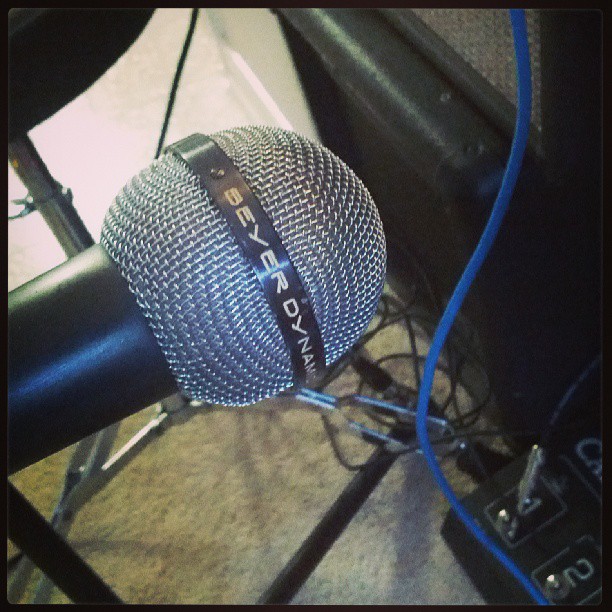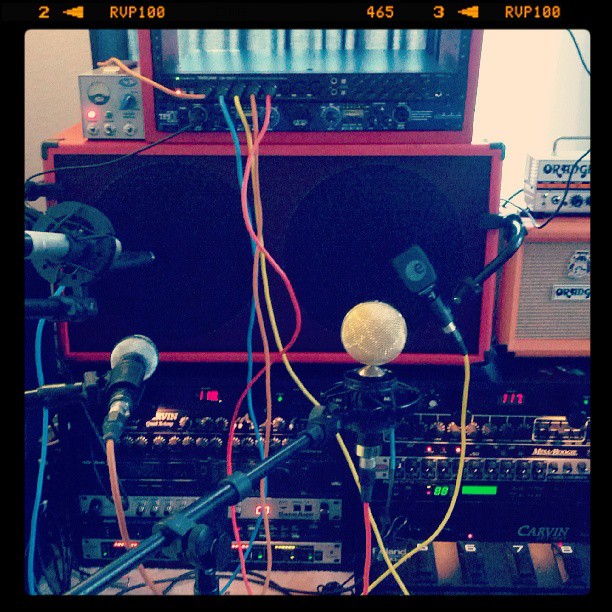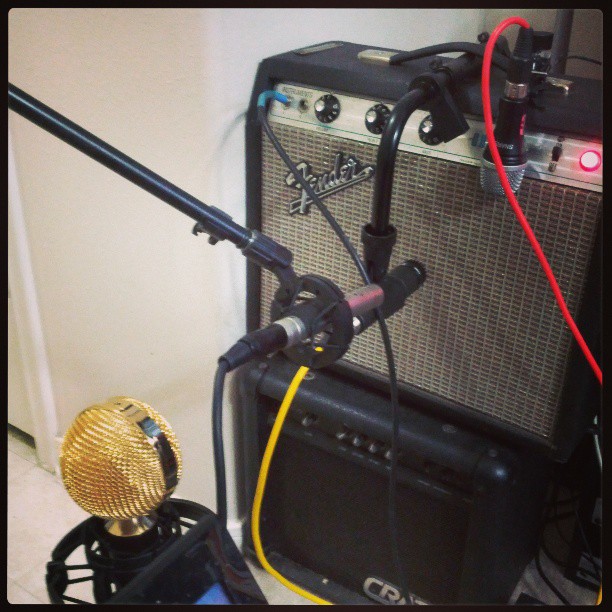Probably nothing is more frustrating than mic'ing up your guitar amp, playing your heart out and nailing the take, and then listening back to your recording only to find it sounds lifeless or dull. Or it doesn't sound like what your ears were hearing. Its an incredibly maddening process to try to get recording right and involves a lot of trial and error. The first rule is: there are no rules.
I know that doesn't really help, so here are some starting points to work with. The industry-standard guitar microphone is the Shure SM57. Get one. They are cheap and they sound pretty good and they are rugged and strong. The SM57 is a dynamic microphone so it doesn't need phantom power, just plug it into a good mixer or preamp or recording interface. I highly recommend pairing the SM57 with another microphone; something with different character.
Ribbon microphones are popular for their high-end and transient response and sensitivity. There are several good ones available for reasonable prices. Royer is kind of the industry-standard, but they are pretty pricy. Instead, check out the Cascade Fathead II or the Beyerdynamic M160; each is very different from each other and from an SM57.
Once you have two or more microphones, you will want to set them up. This is where you want good boom stands that will allow you to position the microphone exactly where you want it, without slipping or sliding or tipping over. Generally speaking, you'll want to put the SM57 close to the speaker. You can vary the positioning of the mic to either put it straight on-axis, slanted-but-pointed-at-center, or off-axis. Each will sound slightly different. Experiment to find what works best for you! I find that the slanted pointed-at-center approach works best for me.
The other microphones, ribbons or large diaphragm condenser microphones you should place at least 2' away from the amp to try and capture the room sound and how the sound develops as it emerges from the amp. Again, this isn't a hard and fast rule; there are plenty of producers who put large condenser mics right up against amps. But that doesn't work for me.
This was a picture of one of my better recording sessions. What you see are five microphones mic'ing up a 2x12 cabinet. Off-center against the grill on the left is an SM57, on the right and close to the grill is a Sennheiser e609. These mics are each panned hard left and hard right in the mix. Then further back on the left side we have the M160 and on the right side a Fathead II (in gold). Lastly, I used a Chameleon Labs TS1 mic with a small diaphragm capsule all the way on the left aimed at the center of the cabinet.
I captured each microphone on a separate track. Then I panned the SM57 and Fathead hard right, and the e609 and the M160 hard left. I put the TS1 in the center. Then I inverted the phase of the left-side tracks. This creates a bigger stereo field, while the TS1 in the center of the mix helps prevent any loss of clarity from phase cancellation.
You don't always need to use expensive mics to get interesting effects. On small guitar amps with small speakers, they tend to lack a bit of low-end. I will use a kick-drum mic on the edge of the amp to capture some low-end and blend that into the mix.
So just remember, more mics (on separate tracks) gives you more options at mix-down time. Use your ears and don't be afraid to try something different!



No comments:
Post a Comment